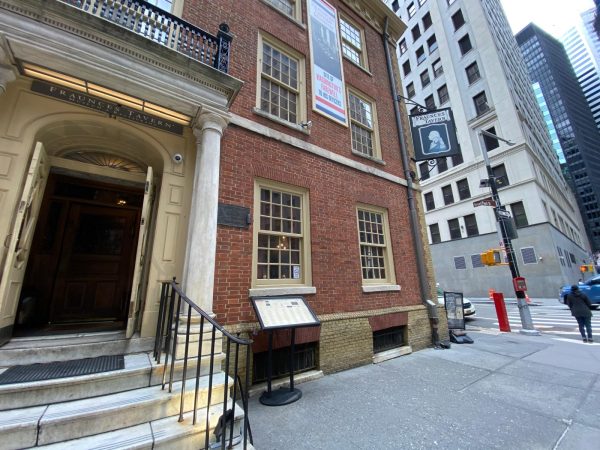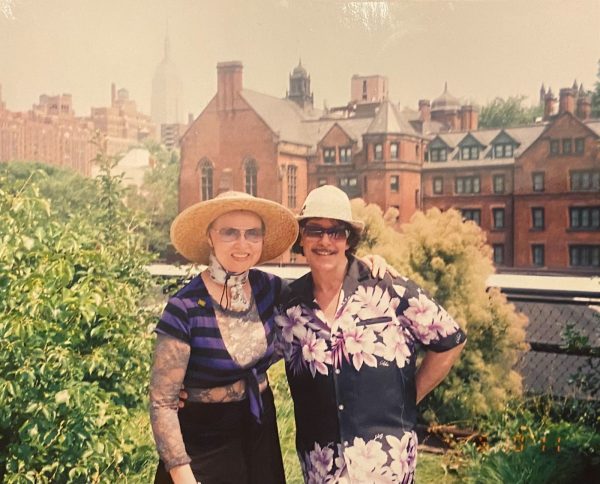Jane Austen: Universally Acknowledged
Nineteenth century English novelist Jane Austen and her beloved books remain extremely relevant to this day.
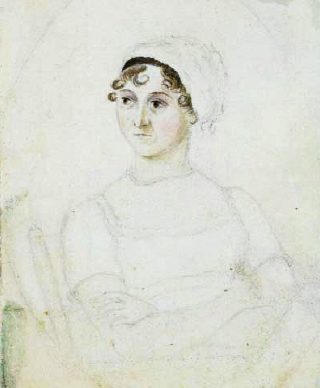
Cassandra Austen (1773-1845), Public domain, via Wikimedia Commons
Jane Austen is most known for her six published and finished novels, all made into various spin-offs and adaptations for generations to love.
With dozens of adaptations of Jane Austen’s novels and short stories in the twentieth century, Austen’s cherished book Pride and Prejudice is arguably the most famous novel for recent generations to either watch or read. Having over 25 film, TV, and theatrical interpretations, Pride and Prejudice still manages to enchant fans today with the romantic chemistry between Elizabeth Bennet and Fitzwilliam Darcy. The bollywood spin-off of the story, called Bride and Prejudice, as well as the ridiculous adaptation of Pride and Prejudice Zombies are such examples, incorporating a similar plotline with romantic elements, but with a bollywood and horror twist.
It is not just Pride and Prejudice that captures the spotlight of all of Austen’s novels. Her six published books have a perfectly balanced plate of wit, realism, and satire that causes many readers to fall in love with the characters and their world. Persuasion, for example, has been made into four television versions, many theatrical productions, and various radio broadcasts. Sense and Sensibility, Austen’s first published novel, also has four adaptations, with three being made into a modern version and another published in 1995. Emma features an infamous plotline with the “handsome, clever, and rich,” heroine being a cherished character among fans, and was recently turned into the most modern version of the film Emma 2020 with the same name.
Now you may be wondering, who exactly is Jane Austen? Even in her time, Austen was not known for her works despite being one of the world’s most famous English authors as of today.
Biography
Jane Austen lived a quiet life, focusing on pursuing her love for creative writing. She was born on December 16th, 1775 in Steventon, United Kingdom to Cassandra and George Austen. Jane was the seventh of eight Austen family children. She had six brothers and as a result, Jane formed a close bond with her only sister, Cassandra (who was named after their mother).
Jane and her family lived in a peaceful environment inside Chawton Cottege. She was close with her father: a scholar who encouraged all of his children to appreciate education and writing. Jane’s affectionate home life eventually influenced the context and settings for some of her stories. Elizabeth Bennet, for example, was one of four daughters in the Bennet family. She was especially close with Jane Bennet, her older sister. This was inspired due to Jane Austen’s own family consisting of a majority of men and her own strong bond between her and Cassandra.
Austen never married, despite writing many fictional plotlines dealing with love, heartbreak, and romance. There is said to have been some sort of fling with Harris Bigg-Wither, an heir of the Hampshire family in England. However, historians speculate that she rejected his proposal. Austen’s own letters suggest that she was in love with someone who passed away before she had confessed her love — a testament to her experiences with heartbreak. Bereavement is a central theme in many of her works, projecting some of those emotions onto her heroines.
Many of Austen’s personal pages of her life are left in blank lines, as not much was left behind. After her mysterious death on July 18th, 1817, her beloved older sister Cassandra destroyed and censored a lot of surviving letters for the sake of Jane’s privacy. As of today, Jane Austen’s cause of death remains unknown. For a good while, people suspected she died as a result of Addison’s Disease, a rare condition where your body does not produce enough hormones. It was also suspected that she died of Hodgkin’s Lymphoma, a type of cancer that causes white blood cells, or lymphocytes, to grow out of control. Newer research today alternatively suggests that she passed from disseminated tuberculosis, which can be passed down from cattle or unpasteurized milk.
Novels
Sense and Sensibility, published in 1811, was well on its way to being published during the late 1700s. First titled Elinor and Marianne, the story describes the life of sisters Elinor and Marianne Dashwood and their love lives. Essentially, the two sisters represent ‘sense’ and ‘sensibility.’ Elinor is seen as more rational and sensible, staying consistent to her lover Edward, whom she was close to back at their hometown. Eventually, her loyalty persevered and Edward proposed to her after many tribulations. Marianne is the opposite of her sister, as she is more sentimental, emotional, and expressive. She falls in love with a dashing man named John Willoughby, but ends up being heartbroken after he leaves her for a heiress. At the end, she settles with marrying another character, a man by the name of Colonel Brandon.
Although not a huge hit compared to her most popular work, Sense and Sensibility holds a special place in Janeite’s hearts (Janeite is the official term for Jane Austen fans). The richly woven tale of two sisters who explores the different forms of heartbreaks young women struggle with, even today. The novel tells the story in a way that makes the reader connect with the characters due to the two sister’s relatable experiences, whether you may be Elinor, Marianne, or both. It’s an amazing read once readers understand the concrete and realistic plot to an extent.
Her next novel, published in 1813, is her most popular novel to this day. Pride and Prejudice centers around the romance between heroine Elizabeth Bennet and Fitzwilliam Darcy. After meeting Darcy for the first time at a ball, Elizabeth dislikes him for his snobbish behavior. After a while, Darcy starts to fall for Elizabeth due to her intelligence and spirited personality, but Elizabeth rejects his proposal. After a visit to Darcy’s estate, Elizabeth hears about what a wonderful gentleman Darcy truly is, and her opinion of him starts to change. At the end of the novel, Darcy and Elizabeth go on a walk together, and get married after Darcy confesses his same love to her. The novel was a huge hit and has various spin-offs.
What makes the novel so brilliant is how well developed each of the characters are, resulting in the perfect rom-com plot line centering around Elizabeth and Darcy. The whole plot revolves around a lesson that many people themselves struggle with: judging someone at first glance. Austen’s balance between humor, drama, and misunderstanding formulates the perfect read to sit back and enjoy.
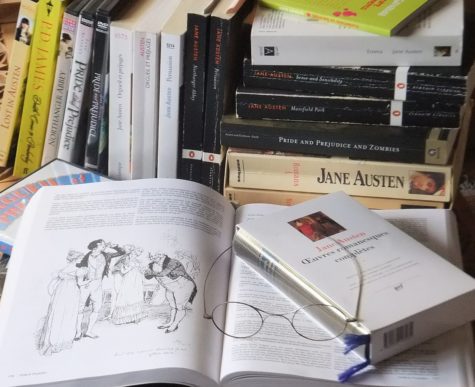
Mansfield Park was published a year later in 1814 and tells the story of a girl named Fanny growing up in Mansfield Park. She moves to her aunt and uncle’s estate due to her mother’s financial struggles. After her uncle’s death and her aunt moving out, the Grants move in, bringing their half-siblings. As many of the characters flirt and fall in love with one another, Fanny grows miserable as Edmund, her cousin whom she loves, and Mary, one of the half-siblings of the Grants, become well-acquainted. After a lot more love-square mishaps happen, Edmund calls off his and Mary’s romance and falls in love with Fanny.
Despite being arguably Austen’s least popular work, Mansfield Park holds some significant virtues that many readers fail to recognize. Sitting behind in the shadows of the successful Pride and Prejudice, many find it hard to relate to Fanny and her secluded life. However, because the heroine spends most of her time in the background of her own story, Austen set up a stage for the spotlight to fall on other characters. This allowed her to mock those who were acting flirtatious with one another despite it being obvious that they were not good for each other. This unique plot that differentiates Mansfield Park from the stereotypical love story is one of the main reasons why readers should appreciate the book more.
Emma is personally my favorite Jane Austen novel. Published in three volumes in 1815, Jane Austen describes her main heroine as, “handsome, clever and rich, with a comfortable home and happy disposition seemed to unite some of the best blessings of existence and had lived nearly twenty-one years in the world with very little to distress or vex her.” Austen had thought that Emma would be a character that “no one but myself will much like.” Yet, years later, her statement proved to be entirely false, with generations of readers loving Emma and all of her flaws. The novel explores Emma’s desire to matchmake people she knows. After struggling to find the perfect man for her friend Harriet, Emma finds love herself at the end.
Emma’s implementation of a unique narration and point of view is what truly stood out to me. Critic and professor Wayne C. Booth describes Austen’s usual style of narration as “the embodiment of everything we admire most — wise, gracious, penetrating in judgment, subtle, witty, tender, and properly valuing wealth and rank.” What makes this particular novel distinguishing is the overlap between the outside narrator and our dear Emma. After finishing the novel, like others, I fell in love with Emma’s incredibly flawed self in all her glory. Her chaotic personality and how she interacted with the characters of the novel was the main reason why she is one of the most beloved characters in all of English literature, along with her Austen character sister, Elizabeth Bennet.
Persuasion, published in 1817, is by far Austen’s most mature work. In comparison to other heroines, Anne Elliot is much more fledged and relatable. The deep and serious themes presented through the novel stem from Anne’s growth and development. When she was young, she had rejected the man she loved due to family advice and had come to regret it. As the story progresses, she becomes a much brighter character, and her love, Frederick, comes back to her and proposes in a romantic letter that readers cannot forget.
Jane’s last finished work that was published is Northanger Abbey, also published in 1817. Catherine, the heroine of the novel, meets Henry Tinley and wants to pursue a relationship with him. However, her friendships with a pestering man named John, her friend Isabella, and her brother James, cause Catherine’s progress to be disrupted. Later on, she and Henry become closer through walks through the garden and meeting Henry’s sister, Elinor. At the end of the novel, Catherine and Henry gain everyone’s approval to marry. The novel is truly remarkable, and is scripted uniquely, parodying the gothic novels that the heroine herself reads.
Legacy
Despite her personal life being a sort of mystery, there is no doubt that she was an extremely talented author and a hero for women and writers to look up to. She created a legacy of being the first ever of her time to describe the lives of middle-class individuals in a realistic sense. Her novels tie the heroines to the readers in a more relatable manner, and was able to do so with her witty and cunning personality and her sprinklings of satire elements. Beautifully structured are her novels, and her skill of devoting readers to enjoy reading about the lives of her characters with her timeless method of writing is the reason why a multitude of fans always come back and revisit her works.
Alex Woloch, a Stanford English professor, explains how, “There is a level of intelligence in her work that the reader feels, and it has to do with her psychological perceptiveness and the sheer skill of her writing.”
Winston Churchill, who was the Prime Minister of England during World War II, was said to have read Pride and Prejudice as a way to recover from the phenomena of the crisis, according to The New Yorker. Queen Victoria was also a big Janeite, reading her novels as a way to escape to a world that was much simpler than her time. Other fans, despite loving every word of her precious works, were also intimidated by her wit and literary intelligence. A British critic wrote, “she is a literary classic of the society which attitudes like hers, held widely enough, would undermine.” Another critic, Lionel Trilling, explained how Austen is extremely ruthless when she forces readers to confront their “moral weaknesses.”
Austen was recognized by a lot of well known literary authors as well, both with positive and negative remarks. The author of Harry Potter, J.K Rowling, has said that she “imagined being a famous writer would be like being like Jane Austen.” Mark Twain on the other hand had quite the opposite view. He said, “I often want to criticize Jane Austen, but her books madden me so that I can’t conceal my frenzy from the reader; and therefore I have to stop every time I begin.”
Today, many fans can learn more of Jane Austen’s life by visiting her house in England, where she spent the last eight years of her life. Located near the town of Alton in Hampshire, the village of Chawton definitely should be a next summer vacation destination. People can wander through the rooms of the house, and learn about Austen’s family life through an informational video. According to visitors and museum workers, fans can almost imagine Jane Austen and her family enjoying life in their peaceful manor by taking strolls in the garden and drinking tea.
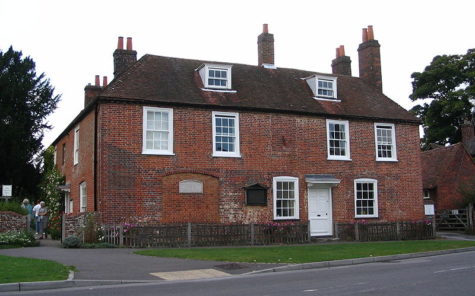
(Rudi Riet from Washington, DC, United States, CC BY-SA 2.0 <https://creativecommons.org/licenses/by-sa/2.0>, via Wikimedia Commons )
If you want to learn more about the infamous Chawton landmark, and maybe partake in a visit, you can check out the museum website HERE.
If you want to learn more about Jane Austen and her novels, you can view the official Austen website HERE.
“There is a level of intelligence in her work that the reader feels, and it has to do with her psychological perceptiveness and the sheer skill of her writing,” said Professor Alex Woloch at Stanford University.
Maliha Chowdhury is an Editor-in-Chief and a Social Media Editor for ‘The Science Survey,’ and she enjoys the value of truth that is expressed in journalistic...



